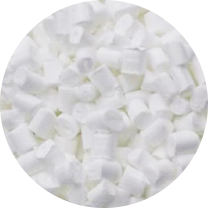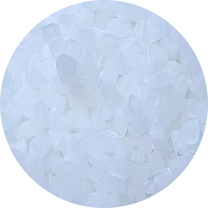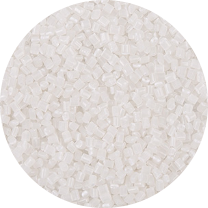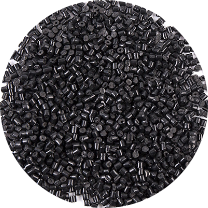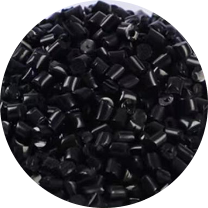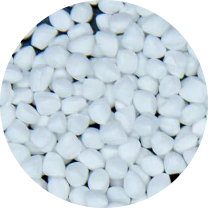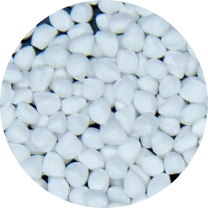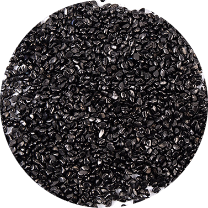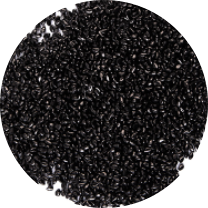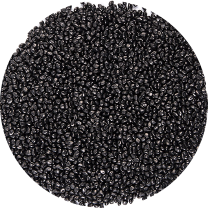Injection White Masterbatch: Key Applications and Selection Guide
- 1 Understanding Injection White Masterbatch and Its Industrial Significance
- 2 Top 5 Applications of Injection White Masterbatch in Modern Manufacturing
- 3 Technical Comparison: Injection White Masterbatch vs. Alternative Coloring Methods
- 4 Optimizing Injection Molding Parameters for White Masterbatch
- 5 Solving Common Challenges With Titanium Dioxide White Masterbatch
Understanding Injection White Masterbatch and Its Industrial Significance
Injection white masterbatch is a concentrated mixture of pigments and additives dispersed in a carrier resin, specifically formulated for injection molding processes. This specialized material serves as a cost-effective solution for achieving consistent white coloration in plastic products across various industries. Unlike dry pigments or liquid colorants, masterbatch offers superior dispersion, reduced dust contamination, and easier handling in production environments.
Injection Molding White Masterbatch White Injection Plastic Granules
1.1 The Composition of High-Performance White Masterbatch
A typical injection white masterbatch contains three primary components: the white pigment (usually titanium dioxide), the polymer carrier (often matching the base resin), and various additives that enhance performance. The titanium dioxide concentration typically ranges between 20-80%, depending on the required opacity and brightness. Carrier resins are carefully selected to ensure compatibility with the base polymer during injection molding, preventing phase separation or processing issues.
1.2 Manufacturing Process Overview
The production of injection white masterbatch involves several critical steps: high-speed mixing of raw materials, melt compounding through twin-screw extruders, strand pelletizing, and quality control testing. Advanced manufacturers employ precision dispersion technology to ensure uniform pigment distribution, which directly impacts the final product's color consistency and mechanical properties. Process parameters like temperature control and shear mixing intensity significantly affect the masterbatch quality.
Top 5 Applications of Injection White Masterbatch in Modern Manufacturing
The versatility of white masterbatch for injection molding makes it indispensable across multiple sectors. Its ability to provide opacity, brightness, and UV resistance while maintaining material properties drives its widespread adoption in these key applications:
2.1 Food Packaging Containers
In food packaging, white masterbatch for PP injection molding dominates the market due to polypropylene's FDA compliance and excellent moisture barrier properties. The white coloration not only provides a clean aesthetic but also enhances printability for branding and nutritional information. Compared to alternative coloring methods, masterbatch offers superior migration resistance, crucial for food contact applications.
2.2 Medical Device Components
The medical industry relies on specialized medical-grade white masterbatch formulations that meet stringent regulatory requirements. These formulations avoid heavy metals and use biocompatible carriers suitable for devices like syringe bodies, IV connectors, and surgical instrument housings. The high opacity provided by premium titanium dioxide helps maintain sterility indicators and prevents light transmission in sensitive medical applications.
Technical Comparison: Injection White Masterbatch vs. Alternative Coloring Methods
When selecting coloring solutions for injection molding, manufacturers must evaluate multiple technical and economic factors. The following comparison highlights key differences between white masterbatch and competing technologies:
| Parameter | Injection White Masterbatch | Dry Pigments | Liquid Colorants |
|---|---|---|---|
| Dispersion Quality | Excellent | Variable (requires intensive mixing) | Good |
| Dust Generation | Minimal | Significant | None |
| Storage Stability | 12+ months | 6-8 months | 3-6 months |
| Color Consistency | ±0.5 ΔE | ±2.0 ΔE | ±1.5 ΔE |
| Equipment Cleanliness | Easy cleanup | Extensive cleaning needed | Potential for staining |
Optimizing Injection Molding Parameters for White Masterbatch
Successful implementation of white masterbatch requires careful adjustment of injection molding parameters to maintain color consistency and part quality. The high titanium dioxide content affects melt flow characteristics and thermal stability, necessitating specific processing conditions.
4.1 Temperature Profile Recommendations
When using high-opacity white masterbatch, barrel temperature settings typically need adjustment upward by 5-15°C compared to natural resin processing. This compensates for the increased melt viscosity caused by pigment loading. However, excessive temperatures must be avoided to prevent thermal degradation of the carrier system or yellowing of the white coloration.
4.2 Injection Speed and Pressure Considerations
The addition of white masterbatch generally requires 10-20% higher injection pressure due to reduced melt flow index. However, injection speed should be carefully balanced - too slow may cause premature cooling and visible flow lines, while too fast can lead to jetting or uneven pigment distribution. Optimal parameters vary by resin system and part geometry.
Solving Common Challenges With Titanium Dioxide White Masterbatch
Despite its advantages, white masterbatch presents unique challenges that manufacturers must address to ensure product quality and process efficiency.
5.1 Preventing Plate-Out and Equipment Buildup
Plate-out, the accumulation of additives on mold surfaces, occurs more frequently with highly loaded white masterbatches. This manifests as white residue on tools and gradual deterioration of part surface quality. Countermeasures include using specialized lubricant packages in the masterbatch formulation, regular mold cleaning protocols, and optimizing processing temperatures to minimize additive migration.
5.2 Maintaining Color Consistency Across Production Runs
Batch-to-batch color variation represents a significant quality concern in white products. Key strategies include implementing rigorous raw material qualification, maintaining consistent let-down ratios, and monitoring equipment wear that could affect dispersion. Advanced operations employ spectrophotometric quality control at multiple process stages to maintain ΔE values below 1.0 for critical applications.
prevNo previous article
nextUnderstanding Carbon Black Masterbatch: An Essential Additive for Plastics


 English
English 中文简体
中文简体 한국어
한국어 عربى
عربى

